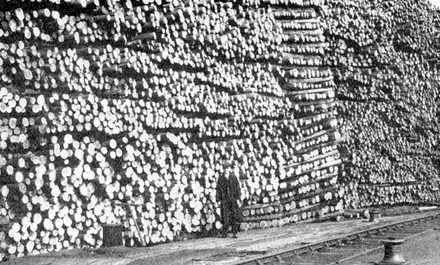PONTYPOOL GLYN PITS
Broken Timber

Photograph courtesy of National Museum of Wales
This collier seems to be clearing up after a fall. Above his head can be seen broken timbers which were commonplace. Until the ground settled, it was usual for the roof weight to come on and crush the timbers. Sometimes, these timbers would have to be removed and replaced in order to make things safe to carry on working. The timber used was usually Norway firs. These were the best because if they were under strain from the weight, they gave off sounds of creaking and cracking. Unlike hardwood timber that would suddenly snap without warning, this type of fir was tough and stringy, rather than hard and brittle. A miner would be listening intently, but unconsciously, when working in these sort of conditions. When these sounds were heard, it was a certain sign that things were on the move, and that weight was being applied by the roof or sides, or even both. Timbers came in different sizes cut to length by the foresters to the instructions of the mine owners. Some timbers were called 'Six and a half's' because they were six feet six inches long, others were 'Four and half's' that were four feet six inches long, and so on. Some would be sawn down the middle lengthwise and were called flats, and as one can imagine, used for many underground timbering jobs. Depending on the type of roof, whether firm or loose strata, more or less timber would be used. Coal mining needed colossal amounts of timber as can be seen in the photograph below taken at Cardiff docks in 1937.
